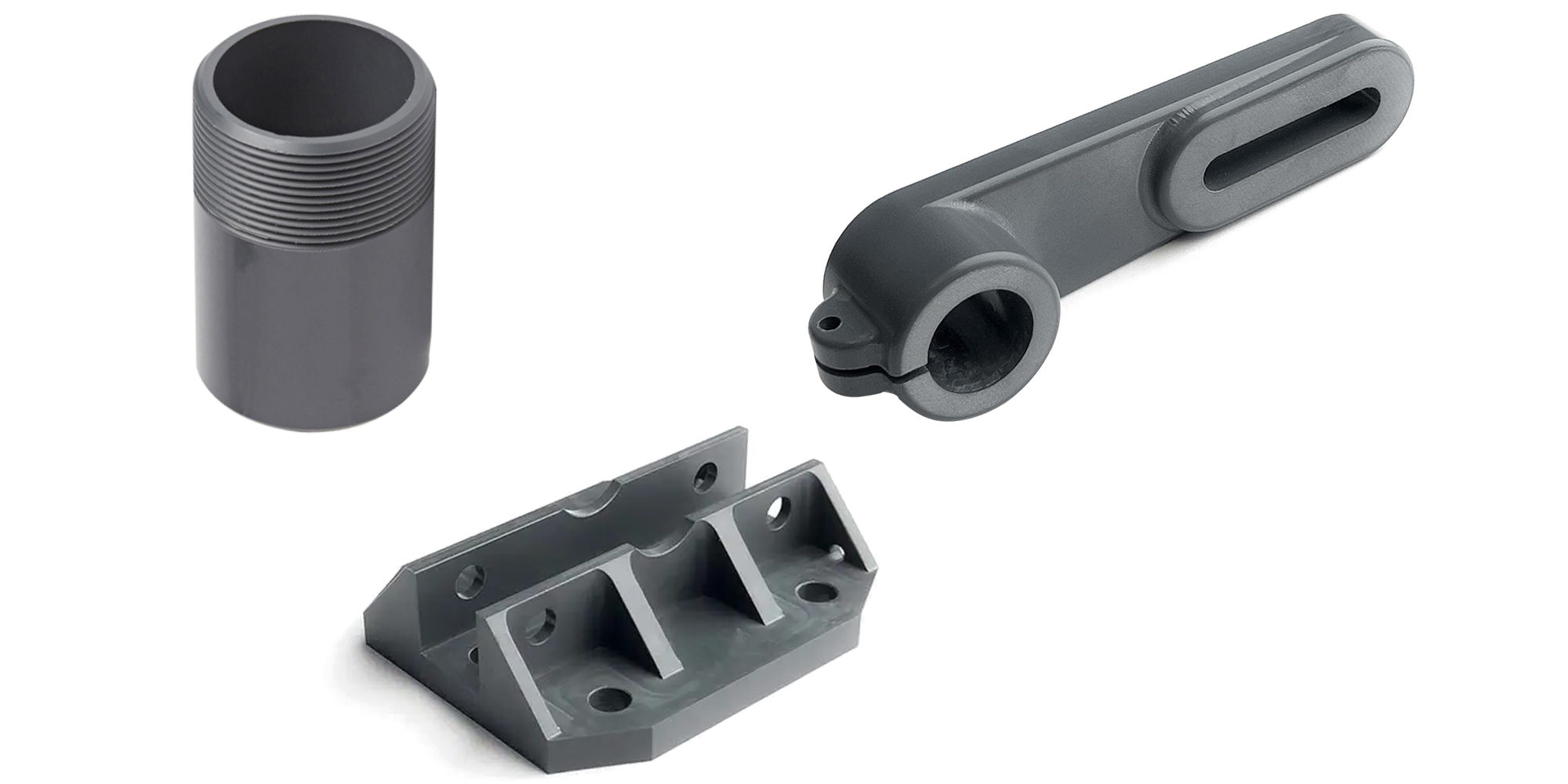Tailored PVC Machining Solutions for Your Business
Discover how custom PVC machining services can be tailored to meet the unique needs of your business, from single prototypes to full-scale production runs, ensuring precision and cost-efficiency.

Upsides and Downsides of PVC Plastic
PVC, or polyvinyl chloride, is a widely used thermoplastic with a range of applications due to its versatile properties. Here are some of its strengths and weaknesses:
| Upsides | Downsides |
|---|---|
| Durability | Temperature Sensitivity |
| Strong and rigid for a long service life. | Becomes brittle in cold, softens with heat. |
| Corrosion Resistance | UV Sensitivity |
| Resists chemicals and alkaline substances. | Degrades with prolonged UV exposure. |
| Dielectric Strength | Flammability |
| Excellent insulator for electrical uses. | Can burn and release toxic chemicals. |
| Cost-Effectiveness | Environmental Concerns |
| Inexpensive compared to many materials. | Production and disposal impact negatively. |
| Machinability | Plasticizers Required |
| Easily machined for precision parts. | Added plasticizers may pose health risks. |
| Low Moisture Absorption | Not Biodegradable |
| Resists water damage. | Long-lasting environmental presence. |
| Chemical Compatibility | Limited Food Contact Use |
| Compatible with a wide range of chemicals. | Certain types not suitable for food contact. |
PVC Precision Machining Parts and Applications
PVC, due to its diverse properties, is an excellent material for precision machining, which utilizes CNC technology to create detailed and accurate components. Below are some commonly machined PVC parts and their applications:
Physical Properties of PVC Material
Below is a table of these key physical properties of PVC material, sourced from authoritative materials science references such as ASM International’s Material Data Sheets and the Engineering ToolBox:
| Property | Value | Units | Description |
|---|---|---|---|
| Density | 1.3 – 1.45 | g/cm³ | Indicates the mass per unit volume; important for weight considerations and material cost estimation. |
| Tensile Strength | 50 – 75 | MPa | Measures the material’s resistance to being pulled apart, crucial for load-bearing applications. |
| Modulus of Elasticity (Young’s Modulus) | 2.9 – 3.3 | GPa | Describes the material’s stiffness or rigidity; higher values indicate less elastic deformation. |
| Impact Strength | 2 – 20 (Notched Izod) | kJ/m² | Reflects the material’s ability to absorb sudden impacts without breaking, essential for durability. |
| Melting Point | 160 – 210 | °C | The temperature at which the material transitions from solid to liquid; important for processing and use. |
| Coefficient of Thermal Expansion | 5.0 – 8.0 x 10^-5 | °C^-1 | Indicates how much the material will expand or contract with temperature changes. |
| Chemical Resistance | Excellent to many chemicals and water | – | Describes the material’s ability to withstand corrosive environments, affecting longevity and maintenance. |
CNC Machining Tips for PVC Plastic
CNC machining PVC plastic requires specific considerations to optimize the machining process and achieve the desired results. Here are six detailed CNC machining tips for PVC, tailored from authoritative sources on plastic machining:
| CNC Machining Aspect | Detail & Specification | Tool or Parameter | Purpose or Benefit |
|---|---|---|---|
| Tool Selection | Use sharp, single-flute carbide end mills and drills. | Carbide Tools | Maintains sharpness and durability, crucial for clean cuts in PVC. |
| Cutting Speed | Maintain a speed between 100 to 300 meters per minute. | CNC Machine Settings | Helps prevent the PVC from melting due to friction-generated heat. |
| Feed Rate | Opt for a feed rate between 0.05 to 0.5 mm per tooth. | CNC Machine Settings | Ensures efficient chip removal and reduces the risk of heat buildup. |
| Cooling Techniques | Use compressed air to cool the cutting area and blow away chips. | Compressed Air System | Maintains surface integrity and prevents material deformation. |
| Chip Removal | Efficient chip evacuation is necessary to prevent re-cutting of chips. | Vacuum Systems, Regular Clearance | Improves surface finish and accuracy by removing chips effectively. |
| Avoid Clamping Stresses | Utilize soft jaws or vacuum clamping to secure PVC. | Soft Jaws, Vacuum Clamping | Prevents deformation of PVC due to excessive clamping force, preserving dimensional accuracy. |
CNC Turning and CNC Milling for ABS Parts
In both CNC turning and milling, the key to successful machining of PVC lies in managing heat generation and chip removal, as well as choosing the right tools and cutting parameters to preserve the integrity of the material.
PVC is highly machinable, allowing for precise shaping and smooth finishes with minimal tool wear. It’s relatively soft, reducing the strain on cutting tools and producing fine chips that are easy to clear away. However, care must be taken to manage heat during machining to prevent material deformation.
